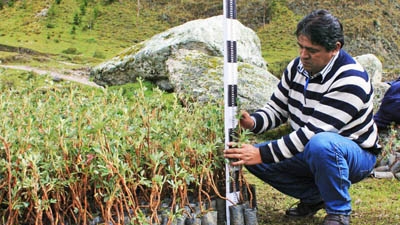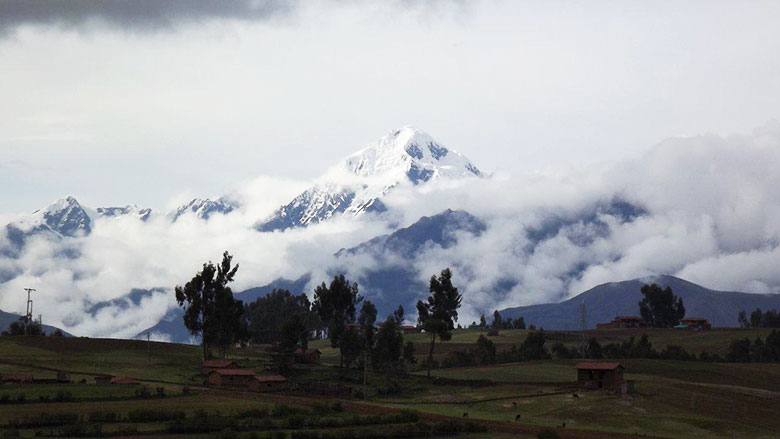In the Andean worldview, apus (Quechua for lords) refers to mountains associated with a divinity, an important character or to a group of mountains whose summits nourish nearby inhabitants by supplying them with water. These mountains, crowned with pristine snow year round, are thought to have a direct influence on the lives of the people living in their foothills.
Peru is home to 71% of the world’s tropical glaciers. For Peruvians, it is hard to imagine the beautiful Andean landscapes without their white mantle, or even to conceive of life in the areas surrounding these glaciers without the water they supply. However, 22% of the surface area of Peruvian glaciers has disappeared in the past 30 years alone.
Tropical glaciers play a key role in regulating water in the Andean region. During droughts or the dry season, the white apus provide abundant water for human consumption, agriculture and hydroelectric energy. One result of accelerated glacier retreat is the formation of new lakes in the highlands, which increase the risk of floods and landslides, in addition to hindering the glaciers’ ability to regulate water, thereby increasing water shortages.
The Glacier Retreat Project
In light of the serious impact of the retreat of Andean glaciers on local populations, the governments of Bolivia, Ecuador and Peru, in collaboration with the World Bank, have implemented the regional project Adaptation to the Impact of Rapid Glacier Retreat in the Tropical Andes Project (known as the PRAA). The project is administered by the Andean Community of Nations.
The Global Environmental Fund (GEF) contributed nearly $ 8 million to the project to strengthen the capacities of governments, ecosystems and local populations to implement concrete actions to mitigate the imminent effects of climate change and glacier retreat in selected areas.
A donation from the Japanese government was used to install a network of eight glacier monitoring stations situated more than 4,000 meters above sea level (13,100 feet) in Bolivia, Ecuador, Peru and Colombia. With support from Senamhi, this network will obtain regional information on glacier conditions and help define more efficient adaptation strategies in the high Andes.
What are the potential consequences of accelerated glacier retreat in the region? What impact will the absence of water regulation have on agriculture, drinking water and the Andean ecosystems that depend on it? What risks do the possible increase of huaicos (Quechua for landslides) pose for local populations? A group of project researchers is currently seeking answers to these questions.
In the case of Peru, the project focuses on three key areas: increasing scientific knowledge of glacier dynamics; defining adaptation strategies based on the information obtained; and implementing some of the adaptation measures identified.


